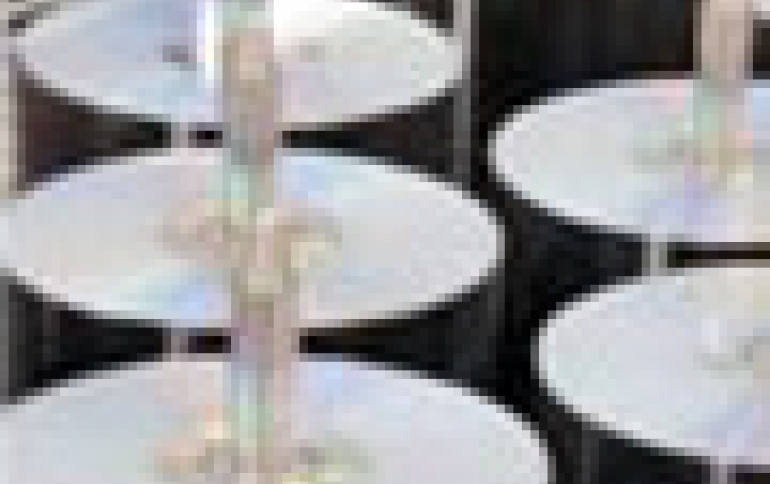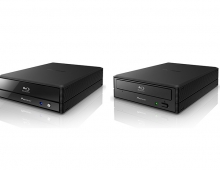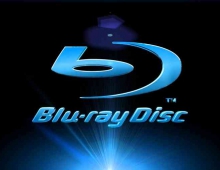
NVD Format to Compete With Blu-ray and CBHD in China
The Chinese proprietary HD NVD (Next-generation Versatile Disc) format has reportedly made its commercial appearance in China last month, in an effort to compete with Blu-ray and the government-backed CBHD formats.
The NVD format is the successor of the Enhanced Versatile Disc (EVD). The format was proposed in September 2007 and it uses red laser to burn information on discs. The NVD-12 disc offers a data rate of 10 Mbps and 12 GB of capacity, using a 0.60 NA lens. The NVD-15 disc has a data rate of 12 Mbps and 15 GB capacity, using a 0.65 NA lens.
Anyone who was interested in optical storage technology some years ago would have been heard of the "Multi-level" technology. Developed by ex-Philips engineers working in the U.S., it was using red lasers to burn information on an optical disc in multiple depths. Each pit on the recorded disc had three different depths and thus, more information was recorded on the disc. China's NVD technology is using this technique in order to achieve higher capacities compared to the DVD format.
However, the specific approach to store information was difficult and a multi-level recording system was not stable enough to reach mass production.
It seems that these problems were addressed now and the first player called "Jiuzhou High Definition" player has been made available on the Chinese market. The device support red-laser HD NVDs with capacities of more than 12GB, as well as regular DVDs.
For sure, the red-ray HD NVDs can be produced on current DVD production lines, allowing China to potentially eliminate the high cost of foreign patent fees and participate in the restructuring of the global optical storage industry. Price, channel and relevant industrial supports are the advantage of NVD. On the other hand, there is not any Hollywood studio currently willing to support the format.
Piracy concerns
Movie piracy in China is a huge problem for any format that gains the support of the Chinese government. Actually, China has been trying to combat piracy and these efforts may force the government to leave the NVD format aside, since it is based on red laser technology and it lacks strong anti-piracy techniques. From that point of view, the NVD format may not have many possibilities to succeed in China.
But even the Blu-ray format, which is trying to enter the Chinese market, is already suffering from piracy. The so-called "BD-9" discs (not a formal name but pirates seem to like it a lot) are currently sold in China for US$5.00-7.00. They are actually DVD-R discs that hold Blu-ray movies that have been re-compressed using the H.264 format. The pirates are using the AvcRec recording systems. AvcRec was created by the BD group and allows users to record HD contents with using H.264 onto current DVD-R media. The specific discs are compatible with some Blu-ray players. Strangely, Sony's PS3 is also capable of playing back BD-9 discs and the PS3 is the best selling BD player in China at this moment.
As a result, more than 500 Blu-ray titles are currently available in China now. The situation is definitely not acceptable by the studios and thus, they are also reluctant to start Blu-ray business in China.
In addition, the Chinese government has not approved the Blu-ray disc format yet so they do not need to worry about BD piracy, at least for now.
BDA China has been actively cooperating with content providers and China's domestic DVD manufacturers, enlarging investment in China's market. As for promotion in the terminal market, in order to cultivate the BD market, the BD camp attracted consumers with a bundling sale. In Nov., Sony BDP-S350's price drop was BD's qualitative leap in China's mainland market. However, the Chinese Government has not permitted the imports of Blu-ray discs.
CBHD
The China Blue High-definition Disc (CBHD) format, which had been officially announced in 2007, is also trying to find a way to the Chinese HD market.
The format was backed by China High-definition DVD industry Association (CHDA), the Optical Memory National Engineering Research Center (OMNERC) the DVD Forum. The physical format of CBHD includes Chinese-owned intellectual property and it is based on Toshiba's HD DVD format.
The worldwide financial crisis had an effect in the format's adoption, a DVD forum representative told CDRInfo.
But China Government has decided to subsidize many industries in China to survive the crisis. The government has funded some manufacturers engaged in the CBHD format in order to accelerate the CBHD project.
At CES last month, Chinese delegation had meetings with a couple of Hollywood studios and have come into an agreement to launch CBHD titles in China, according to industry sources in the DVD Forum.
The format is based on Blue laser and it is protected against piracy using the AACS content protection schemes, also used by the Blu-ray format. The CHBD backers believe that this would convince the Chinese government to finally support their format. And with Blu-ray disc manufacturing still in early stages in China, the government has the chance to fight piracy by controlling the Blu-ray disc manufacturing right from the start.
Anyone who was interested in optical storage technology some years ago would have been heard of the "Multi-level" technology. Developed by ex-Philips engineers working in the U.S., it was using red lasers to burn information on an optical disc in multiple depths. Each pit on the recorded disc had three different depths and thus, more information was recorded on the disc. China's NVD technology is using this technique in order to achieve higher capacities compared to the DVD format.
However, the specific approach to store information was difficult and a multi-level recording system was not stable enough to reach mass production.
It seems that these problems were addressed now and the first player called "Jiuzhou High Definition" player has been made available on the Chinese market. The device support red-laser HD NVDs with capacities of more than 12GB, as well as regular DVDs.
For sure, the red-ray HD NVDs can be produced on current DVD production lines, allowing China to potentially eliminate the high cost of foreign patent fees and participate in the restructuring of the global optical storage industry. Price, channel and relevant industrial supports are the advantage of NVD. On the other hand, there is not any Hollywood studio currently willing to support the format.
Piracy concerns
Movie piracy in China is a huge problem for any format that gains the support of the Chinese government. Actually, China has been trying to combat piracy and these efforts may force the government to leave the NVD format aside, since it is based on red laser technology and it lacks strong anti-piracy techniques. From that point of view, the NVD format may not have many possibilities to succeed in China.
But even the Blu-ray format, which is trying to enter the Chinese market, is already suffering from piracy. The so-called "BD-9" discs (not a formal name but pirates seem to like it a lot) are currently sold in China for US$5.00-7.00. They are actually DVD-R discs that hold Blu-ray movies that have been re-compressed using the H.264 format. The pirates are using the AvcRec recording systems. AvcRec was created by the BD group and allows users to record HD contents with using H.264 onto current DVD-R media. The specific discs are compatible with some Blu-ray players. Strangely, Sony's PS3 is also capable of playing back BD-9 discs and the PS3 is the best selling BD player in China at this moment.
As a result, more than 500 Blu-ray titles are currently available in China now. The situation is definitely not acceptable by the studios and thus, they are also reluctant to start Blu-ray business in China.
In addition, the Chinese government has not approved the Blu-ray disc format yet so they do not need to worry about BD piracy, at least for now.
BDA China has been actively cooperating with content providers and China's domestic DVD manufacturers, enlarging investment in China's market. As for promotion in the terminal market, in order to cultivate the BD market, the BD camp attracted consumers with a bundling sale. In Nov., Sony BDP-S350's price drop was BD's qualitative leap in China's mainland market. However, the Chinese Government has not permitted the imports of Blu-ray discs.
CBHD
The China Blue High-definition Disc (CBHD) format, which had been officially announced in 2007, is also trying to find a way to the Chinese HD market.
The format was backed by China High-definition DVD industry Association (CHDA), the Optical Memory National Engineering Research Center (OMNERC) the DVD Forum. The physical format of CBHD includes Chinese-owned intellectual property and it is based on Toshiba's HD DVD format.
The worldwide financial crisis had an effect in the format's adoption, a DVD forum representative told CDRInfo.
But China Government has decided to subsidize many industries in China to survive the crisis. The government has funded some manufacturers engaged in the CBHD format in order to accelerate the CBHD project.
At CES last month, Chinese delegation had meetings with a couple of Hollywood studios and have come into an agreement to launch CBHD titles in China, according to industry sources in the DVD Forum.
The format is based on Blue laser and it is protected against piracy using the AACS content protection schemes, also used by the Blu-ray format. The CHBD backers believe that this would convince the Chinese government to finally support their format. And with Blu-ray disc manufacturing still in early stages in China, the government has the chance to fight piracy by controlling the Blu-ray disc manufacturing right from the start.




















